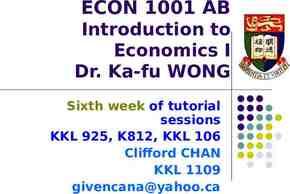Presentation Title (View – Master – Slide Master) Portfolio
28 Slides387.00 KB
Presentation Title (View – Master – Slide Master) Portfolio Making: Truly Reflecting Your Teaching Nancy Latham, Professor, TCH Robyn Seglem, Associate Professor, TCH Fall 2015 Department/Unit/Office/Organization (View - Master – Slide Master)
Portfolio Purpose Employment Award Tenure/Promotion Other Purpose guides context, organization etc it is the story you are telling
Getting Started Mues Mues & & Sorcinelle Sorcinelle (2000) (2000) Establish a system for documentation tracking, separate from day-to-day course records Logistically maintain a way to jot down thoughts and reflections on your teaching in the moment Talk to other faculty memebers about their approach to teaching Collect material on your teaching related activities Write out short-term and long-term goals for your teaching development
It is really not about the portfolio!!! It is about Practice!
What is Reflective Practice? The heart of every part of a teaching portfolio is true, deep, substantive reflection!
Reflecting on Your Teaching (Chickering (Chickering & & Gamson Gamson 1987 1987 AACTE) AACTE) Seven Principles of Good Undergraduate Teaching: –Encourages interaction between students and faculty –Encourages interaction and collaboration between students –Uses active learning techniques –Gives prompt feedback –Emphasizes time on task –Communicates high expectations –Respects diversity-talents, experience, ways of learning
Using Reflective Practice to dig in and improve (Teaching Challenge) 1. Statement of the Problem - describe the problem or question(s)or teaching challenge you analyzed or addressed in your teaching 2. Literature Review – what did the literature say about this issue? 3. Investigate the Problem - how did you collect information to specifically define the problem
Using Reflective Practice to dig in and improve (Teaching Challenge) 3. Consequences of the Problem – What are the consequences of the problem?—What would be the result if you had done nothing? 4. Contributing Factors – What other factors could be contributed to this problem which were not teaching and/or learning based? (i.e. resources, physical environment, parent involvement, etc)
Using Reflective Practice to dig in and improve (Teaching Challenge) 5. Data Collection – How did you collect or use existing data relevant to the problem? 6. Data Analysis – How did you organize the data? How will you analyze the data collected? 7. Dissemination – How did you apply your findings to your practice (teaching Innovation)? What change in learning did you see? How will you disseminate your findings ?
Portfolio Elements Always use the required elements for your table of contents and your methods of organization (if provided). Guidelines or required elements will vary from teaching award portfolios versus tenure portfolios versus promotion portfolios versus employment portfolios If specific element/guidelines are not provided ask colleagues, look for what the institution requires in other portfolios
Teaching Philosophy Specific workshop dedicated to the development of your teaching philosophy Make it real Make it deep. It should be evidenced and connect throughout your portfolio
Summary of Teaching Teaching Narrative Should cover all teaching or at least 5 years of teaching experience. Include: Courses taught—including dates, titles, and number of students for each—as well as a brief explanation of the context of the course in department Additional instructional activities with students (guest speaker appearances, independent studies and honors projects, thesis/dissertation advising and co-curricular teaching-related service. Instruction-related activities Instruction-related activities with non-university colleagues.
Summary of Teaching Teaching Evaluation Record should include: Student evaluations Peer evaluations Self-evaluations Reflection on evaluations
Summary of Teaching Don’t: Make this section solely about numbers. Hesitate to include “negative” evaluations; these, along with positive evaluations, offer you something to reflect on.
Curriculum Development Describe your contributions to curriculum over time. Address revisions to courses, new course developments, and contributions to department/school/university curriculum. Include reflection on your curricular contributions. Include both individual revisions to classes taught over time and/or more institutional-level changes.
Curriculum Development Narrate the types of help you’ve had from others and/or you’ve given to others during the process of curriculum development. Focus on both formal and informal curriculum development. Represent curriculum development through the inclusion of Artifacts that are referenced in this section.
Curriculum Development Don’t: Assume you have nothing to report. (even if it is not a new course. You can include informal course revisions, refining assignments, designing new methods of assessment, etc., as examples of curriculum development. )
Instructional Innovation describe your activities implementing instructional innovations, describe specific strategies and/or technologies, the course(s) in which they were implemented, and your rationale/motivation/goals for the change. Include an evaluation and/or reflection of your activities’ contributions to student learning.
Scholarship of Teaching & Learning describe your scholarship that focuses on teaching and learning covering the last five years. Detail completed projects, current projects, professional presentations at conferences and through publications, and projects in process. Explain how this work has influenced you as a teacher.
Instructional Related Recognition Describe Teaching awards or recognitions identify and contextualize the source and explain the significance. For grants, identify and contextualize the source and explain the significance and the outcomes of the grant.
Teaching Development Plan (shortterm and Long-term teaching goals) Do: Describe briefly where you’ve been and where you are now, and allocate the bulk of the essay to explaining where you’re going as a teacher. Include specifics about your plans for the future and a specific agenda for your ongoing teaching development. Pay close attention to organization and decide whether you’re going to work with narrative (tell your story from beginning to end) or focus on key aspects of your teaching that help you discuss your plans. .
Teaching Development Plan (shortterm and Long-term teaching goals) Do: Remember.The future version of yourself as you develop your teaching is a key highlight of this document. Include elements of your teaching both inside and outside the classroom. integrate ideas from your teaching philosophy and other aspects of your teaching portfolio, Focus on reflection as you discuss your past and present as a teacher and use this reflection as a spring-board for discussing your future direction.
Teaching Development Plan (shortterm and Long-term teaching goals) Don’t: Be too grandiose. Your goals should stretch you as a teacher but still be achievable. Be too theoretical. While you’re working with what you’re hoping to do in the future, this should also be a roadmap for your professional development that is grounded in concrete ideas and practices.
Letters of Support Be choosy and logical Don’t think as much about title (unless required as in the Chair) but more about how the person can speak to the impact of your teaching Variety students, peers, administrators, employers etc.
Artifacts Be mindful of any limitation on number More is not necessarily better, be selective on what best illustrates, illuminates, supports, and reinforces their teaching record as described in the rest of the portfolio. Artifacts should demonstrate the effectiveness of your practices, impact on student outcomes Effective artifacts are those cited in the portfolio
Lastly . this portfolio is ALL the committee has to go on to understand your philosophy, goals, choices, and actions as a teacher. be careful that the materials included are an accurate representation of you. Get peer review and insight Make sure writing is clear Proof Read, Proof Read, Proof Read
Portfolio Intro or Overview Keep cohesion in mind as all of these elements will be reviewed together. Keep in mind that thoughtful reflection as articulated in this portfolio is a key to success. Reference your included artifacts in various narratives For each artifact explain what it is and how it illustrates or illuminates an important component or theme.
Electronic Portfolio Options

































